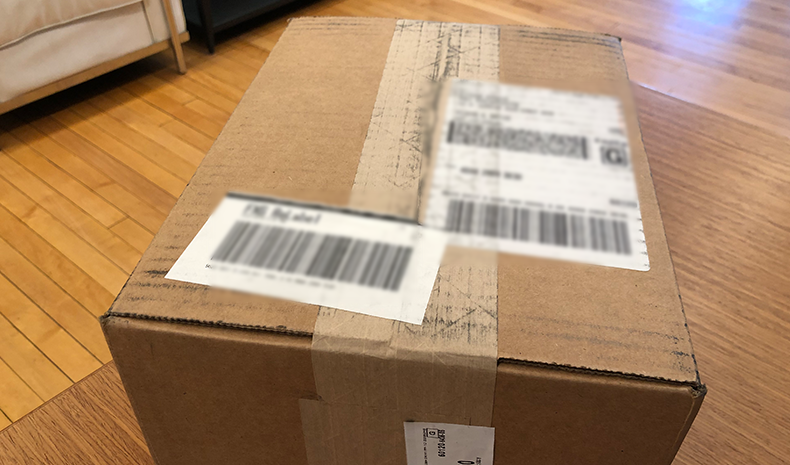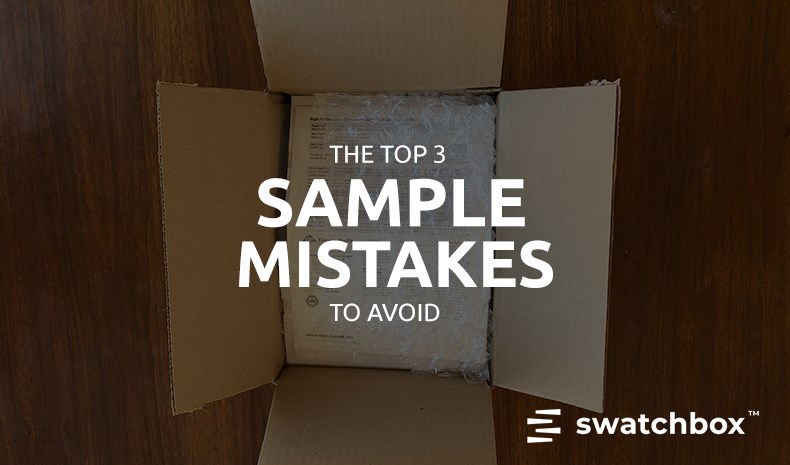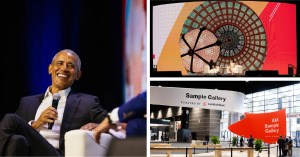Samples are an incredibly important piece of your product sales strategy.
Many brands will dedicate significant budget to making sure that the samples they ship out to architects, designers, and contractors are sleek, impressive, and memorable.
And yet, many brands still miss the mark with their samples, placing not just their brand in jeopardy, but potentially their sales as well.
Here are 3 major pitfalls (and their remedies) that manufacturers too often fall into when executing a product sample strategy.
Mistake #1: Slow-Shows and No-Shows
Timing is everything in the designer’s workflow.
Every project has a deadline, and every task is on a tight schedule. When it comes time to bring out the samples, time is of the essence.
That’s why firms dedicate so much effort to maintaining updated and organized sample libraries, so that when they need a sample they can access it easily and immediately.
So when a designer needs an updated product sample or sample kit, the need is typically urgent.

And yet, after an order is placed, some manufacturer samples take weeks or even months to arrive.
When that happens, that job is as good as lost.
What’s more, if you ask a group of designers, they’ll tell you that it’s not uncommon for a sample to never arrive. This rightfully leaves them wondering if the brand in question cares at all about the people who are most responsible for getting their products specified in projects.
Of course, this neglect is not ever likely to be intentional. Most often, the dropoff is due to poor infrastructure and placing sample fulfillment in the hands of a warehouse team that has plenty of other concerns ranking higher on their to-do lists.
In our experience at Swatchbox, the best sample programs usually come out of manufacturers who place responsibility for their sample programs in the hands of the marketing department. Their job touches every aspect of the process up until sample ordering – why shouldn’t they also maintain engagement during what is perhaps the most crucial piece?
Mistake #2: Poor Packaging
The second mistake that many manufacturers make with their samples is to disregard packaging.
It’s key to remember that the audience receiving these samples are designers. While there may not be much expectation or standard to follow in terms of sleek packaging, there’s tremendous upside in being able to impress a designer and associate a surprisingly positive experience with your brand.
However, a vast majority of sample deliveries (again, often fulfilled by the warehouse) arrive in unmarked brown boxes. More often than not, they’re covered in tape and look like they’ve been shoved through a garbage disposal before showing up at the doorstep.

This look tends to be par for the course, but fails to recognize the enormous opportunity there is to really “wow” a prospect with carefully designed custom sample packaging.
The odd thing is that many brands will spend tens of thousands of dollars updating their website regularly in order to facilitate more sales. But when the same can’t be said of their sample program, there’s an odd incongruity between two pieces of brand interaction that take place in quick succession for many designers. This can be a major gap, as samples are not only a tactile (and therefore memorable) experience, but take place last in the specification workflow, meaning your samples are the final experience that a designer will have with your brand.
Do you want that experience to be with a beat-up cardboard box?
Mistake #3: Missing or Unhelpful Information
Every now and then, there are the brands that get it right: easy ordering, quick delivery, and some beautiful packaging to seal the deal.
But even with a shiny branded box of goodies in front of a designer, many companies fail to include what is perhaps the most important feature of an effective sample strategy: a call to action.

That’s right, more often than not a sample or sample kit will be delivered – with beautiful packaging, colorful brochures and catalogs, and some killer swag to boot – but will not have any sort of business card, thank you letter, or call to action included.
How counterproductive it is for a manufacturer to expect a designer – who most likely already visited their website in search for a sample – to return to the website to try to find someone with whom they can discuss their needs. The crown jewel of an effective sample is to encourage and empower the recipient to take the next step, whether that next step is to place an order or simply start a conversation with a representative.
Avoiding the Pitfalls
Each of these pitfalls comes down to one fatal error in a common thought process: that the decision process of a specifier more or less ends at the website.
If you’re a manufacturer, take a look at the budget you spend on your website year over year versus the budget you spend on your sample program. Then, consider how much of a role your marketing team has in the sample process. The role of a sample is essentially a marketing one, so why not treat it with as much care, design, and budget as your website?
It could make all the difference.
--
Ethan Adams
 Swatchbox is a premier sample fulfillment service for building product manufacturers. With proprietary software designed by insiders of the design community, Swatchbox helps manufacturers improve product sales and brand affinity by delivering material samples to the design community with speed, intelligence, and style. Learn more and join Swatchbox at www.swatchbox.com.
Swatchbox is a premier sample fulfillment service for building product manufacturers. With proprietary software designed by insiders of the design community, Swatchbox helps manufacturers improve product sales and brand affinity by delivering material samples to the design community with speed, intelligence, and style. Learn more and join Swatchbox at www.swatchbox.com.














